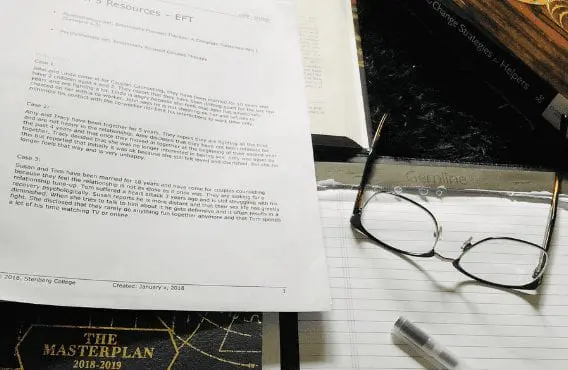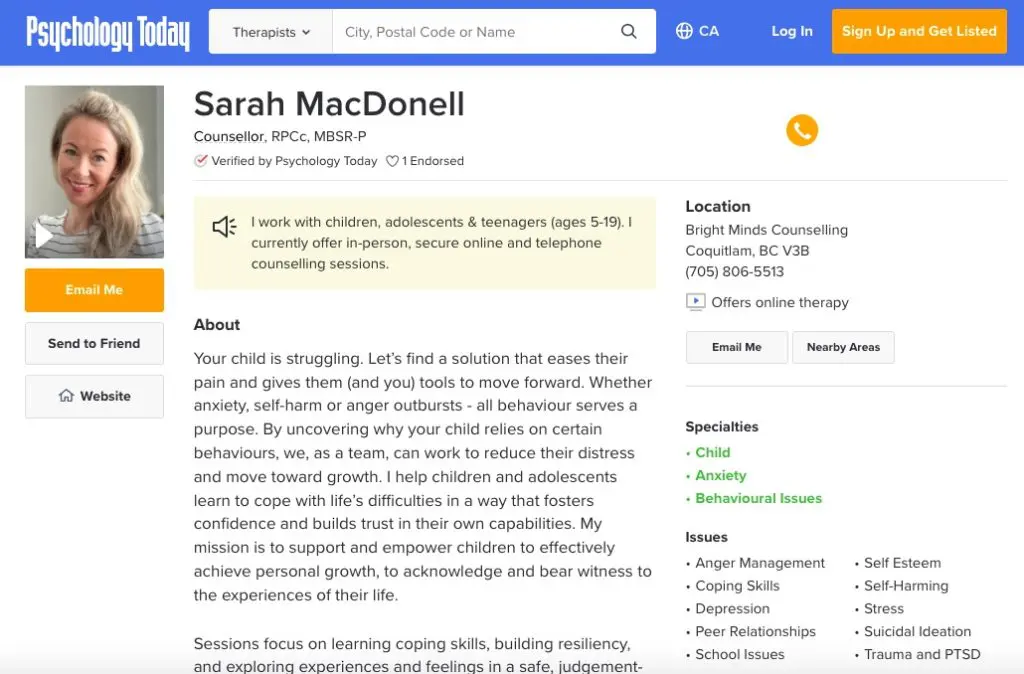At one point or another, all of us have experienced stress or anxiety impeding our success. How can we conquer these anxieties? In my Counselling Therapist Program coursework and clinical experiences, I see much of what makes my clients anxious is not the stressor itself (e.g. the upcoming test) but their thoughts on that stressor (e.g. “I’m going to fail”, “I don’t know this!” and so on).
What if I told you that we could train ourselves to take a test or give a presentation without so much anxiety? Although every person has a different way of handling these situations (based on their history and experiences), I have found the following helpful tips are a great way to start challenging unhelpful thoughts.
Step 1: Identify the stressor and write down the stressful thoughts you have about it

Is the stressor an upcoming test, presentation, paper, or interview? Identify what you’re worried or anxious about and write it down. If you’re anxious about multiple stressors (e.g. a test and a presentation), give each stressor its own page. Worry statements usually sound like “___should happen” or “I should have ____” or “I’m going to ____”.
Remember: your anxious thoughts could be very different, and that’s okay. These are some examples of what I’ve said myself or have heard my clients say.
Step 2: Write down arguments and helpful facts that challenge these worry statements
Challenge your worry statements by checking if they’re helpful or not. Ask yourself “Is this a fact, or is it a thought?”
For example, if your worry statement is “I’m going to fail”, think about all the reasons why you’re not going to fail:
- “I’ve attended all my classes.” (objective fact)
- “I’ve paid attention.” (subjective fact)
- “I was careful to review my notes.” (subjective fact)
- “I’ve taken notes in class.” (objective fact)
Objective facts are indisputable, so you can eliminate them as the source of your worry.
This task may sound easy but the process of identifying counterarguments can become overwhelming. It’s helpful to do this with a trusted friend or a trained counsellor.
Step 3: Explore different relaxation and calming techniques and find what works for you
After you have your list of worries and the helpful facts and arguments to counter them, it’s time to calm your body by addressing its physical responses to stress. These practices usually steady your heart rate and stabilize your breathing.
Some helpful solutions include different breathing and targeted muscle relaxation techniques, visualization exercises, or listening to music. You can have a counsellor guide you through the exercises or you can talk to others and try their tips on challenging unhelpful thoughts.
Be patient as not every technique works for everyone. Be gentle with yourself and experiment with different options.
Step 4: Replace the unhelpful thought with a neutral or more helpful thought
Now that you’re calm and breathing again, look at some of the challenge statements you wrote down in Step 2. These can become helpful replies whenever those unhelpful thoughts come up again. They will help keep your anxiety level lower than if you let the unhelpful thought play over and over in your head.
Bonus: Just like replacing the unhelpful thought with a more helpful one can help lower your anxiety, a positive affirmation can help give you that little motivational boost. There are lots of affirmations that can help give you a little more confidence like:
- “I am capable and learning.”
- “I trust myself and my method.”
- “This is one test in my learning journey; it does not define me. It will help me learn and grow.”
Feel free to find some other examples and try them out.
These steps are very generalized and broad, so it may be hard to start putting them into practice. They will also take time to get used to, so as I’ve mentioned, it’s helpful to have a profesional trained counsellor to walk you through them and help personalize them to your specific concerns and needs. Hopefully, these tips help you start challenging unhelpful thoughts.
Are there any techniques or tricks you use and find helpful? Please feel free to leave me a comment below, I’d love to hear your experience.
Check out a video of our Counselling Therapist Program.











